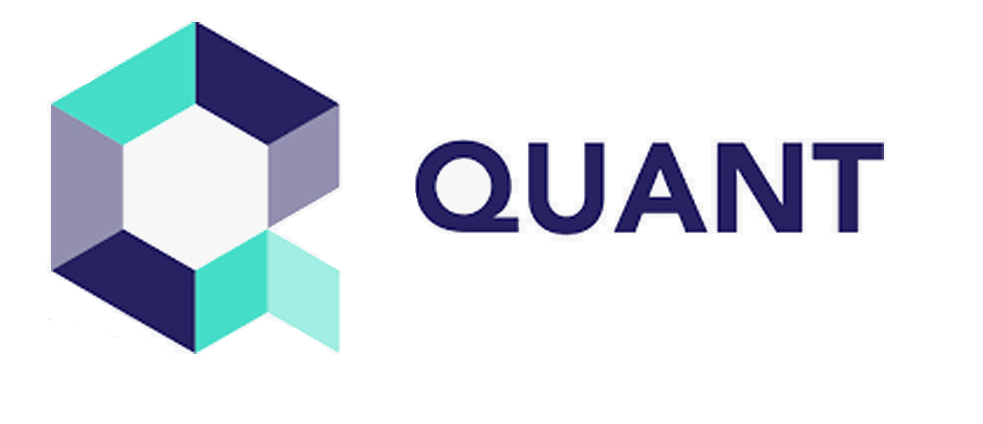Quant: Bridging the Gap Between Blockchains
Blockchain technology has gained significant attention and adoption across various industries. However, one of the major challenges faced by blockchain enthusiasts is the lack of interoperability between different blockchain networks.

Introduction
Blockchain technology has gained significant attention and adoption across various industries. However, one of the major challenges faced by blockchain enthusiasts is the lack of interoperability between different blockchain networks. This limitation restricts the seamless transfer of assets and data across multiple blockchains. To overcome this challenge, Quant Network has developed an innovative solution called Quant. In this article, we will explore the technical details of Quant and how it bridges the gap between blockchains.
What is Quant ?
Quant is a blockchain operating system that facilitates the development of decentralised applications (DApps) that can operate across different blockchains. It acts as a universal translator, enabling communication and interoperability between various blockchain networks. By leveraging Overledger, developers can build applications that can interact with multiple blockchains simultaneously, thereby unlocking the potential for cross-chain transactions and data transfer.
How does Quant work?
Quant achieves interoperability by introducing a set of protocols and APIs that allow different blockchains to communicate with each other. The key components of Quant are as follows:
Overledger DLT Gateway
The Overledger DLT Gateway acts as a bridge between different blockchains. It connects to multiple blockchain networks and facilitates the transfer of assets and data across these networks. The gateway is responsible for translating and validating transactions between different blockchains, ensuring consensus and security.
The DLT Gateway achieves this by implementing a series of connectors that are specific to each blockchain. These connectors enable the DLT Gateway to understand the native protocols and consensus mechanisms of each blockchain, allowing it to interact with them seamlessly. The DLT Gateway also provides a layer of abstraction, shielding developers from the complexities of different blockchain networks.
Overledger API
The Overledger API provides developers with a unified interface to interact with multiple blockchains. It abstracts the complexities of different blockchain protocols, allowing developers to focus on building applications without worrying about the intricacies of each blockchain network. The API supports various programming languages, making it accessible to developers with different skill sets.
The Overledger API allows developers to perform a wide range of operations, including querying account balances, initiating transactions and retrieving transaction history. It provides a standardised set of functions that can be used across different blockchains, simplifying the development process and reducing the learning curve for developers.
Overledger Network
The Overledger Network is a decentralised network of nodes that support the operation of Quant. Nodes validate transactions, maintain consensus and ensure the security of the network. The network is designed to be scalable, allowing for the seamless integration of additional blockchains as the ecosystem expands.
The Overledger Network utilises a consensus mechanism called "TrustTag," which ensures the integrity and immutability of transactions across different blockchains. TrustTag works by creating a cryptographic proof that verifies the state of a transaction at a given point in time. This proof is then stored on the Overledger Network and can be used to validate the transaction across different blockchains.
Benefits of Quant
Quant offers several benefits that make it a powerful solution for blockchain interoperability:
Cross-Chain Transactions
With Quant, users can initiate cross-chain transactions, enabling the transfer of assets between different blockchains. This functionality opens up new possibilities for decentralised finance (DeFi), supply chain management and other applications that require interoperability.
Cross-chain transactions are facilitated by the Overledger DLT Gateway, which acts as a bridge between different blockchains. The DLT Gateway ensures that transactions are translated and validated correctly, maintaining the integrity and security of the transfer.
Data Interoperability
Quant not only enables the transfer of assets but also facilitates the exchange of data between different blockchains. This feature is particularly useful for applications that rely on data from multiple sources, such as IoT (Internet of Things) and data analytics.
Data interoperability is achieved through the Overledger API, which provides developers with a unified interface to access and exchange data across different blockchains. Developers can retrieve and aggregate data from various sources, enabling them to build applications that leverage data from multiple blockchains.
Scalability and Future-Proofing
Quant is designed to be scalable and can accommodate the integration of additional blockchains as the ecosystem evolves. This future-proofing ensures that applications built on Overledger can adapt to the changing blockchain landscape without requiring significant modifications.
The Overledger Network is designed to handle a large number of transactions and can scale horizontally by adding more nodes to the network. This scalability ensures that the network can handle increased transaction volumes as more blockchains are integrated into the ecosystem.
Conclusion
Quant is a groundbreaking solution that addresses the challenge of blockchain interoperability. By providing a universal operating system for blockchains, Quant Network enables seamless communication and data transfer between different networks. This opens up new possibilities for decentralised applications and paves the way for a more connected and efficient blockchain ecosystem. With Quant, the vision of a truly interconnected blockchain future becomes a reality.
Note: This article is for informational purposes only and should not be considered as financial advice. Always do your own research and consult with a qualified financial advisor before making any investment decisions.



